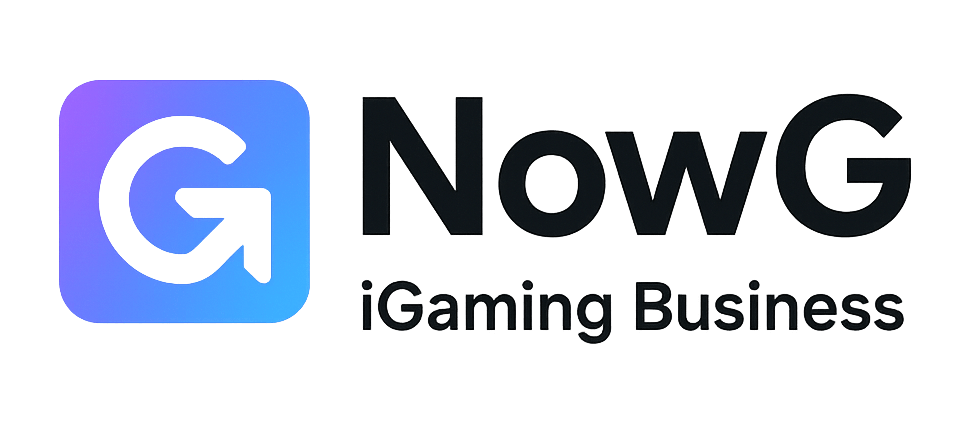TL;DR: “Free” affiliate tracking is real—but it’s often a free tier with limits or a self-hosted open-source project that you’ll pay for in time and DevOps. Below I review the most viable options I’ve actually used or evaluated in client stacks. I call out what’s great, what hurts, and who each tool is really for. Every tool is linked to its homepage so you can validate current pricing (plans change fast).
🔎 What counts as “free” here?
- Freemium SaaS: perpetual free plan or a generous trial with core tracking & payouts.
- Open-source: free code, you host/maintain it. Zero license fee, non-zero ops cost.
💡 My rule of thumb
If you’re not technical and you want speed to first payout, start with a freemium SaaS. If you need deep customization or strict data residency, go open-source—but budget for engineering and security.
Freemium / Proprietary “Free” Plans (SaaS)
These are hosted platforms with a free tier. Expect caps on affiliates, conversions, revenue, or advanced features. You’ll get velocity quickly; you’ll pay later as you scale (which is fine—cost should follow revenue).
| Tool | Best For | Free Tier Reality | Why I’d Pick It | Where It Bites |
|---|---|---|---|---|
| Trackdesk | Affiliate & partner programs at startup/SMB scale | “Free forever” essentials; advanced analytics & automations gated | Clean UI, sane attribution, good fraud tools for the price (I’ve run 20k+ clicks/day just fine) | Onboarding has depth—teams new to tracking may need a day to settle conventions |
| Systeme.io | Solopreneurs needing funnels + email + basic affiliate | Free account includes simple affiliate tracking | All-in-one stack; “good enough” affiliate for info products/micro-SaaS | Affiliate module is basic; complex tiered commissions push you into workarounds |
| Reditus | B2B SaaS that wants a marketplace of affiliates | Free up to an MRR threshold; marketplace listing on paid | Affiliate discovery is the killer feature—I’ve sourced niche partners fast | Revenue gates kick in sooner than you think if growth hits–budget for the jump |
| GoAffPro | Shopify/Woo/BigCommerce stores | Legit free plan for core tracking & portal | Ridiculously quick setup; affiliates love the simple portal | Native payouts are PayPal-heavy; report customization is limited on free |
| Tracknow | Complex programs (MLM, influencers, iGaming) | Free version with limits | Commission logic is flexible (multi-tier, hybrid). Great when “simple CPA” isn’t enough | Initial setup can overwhelm; multi-currency still feels constrained on entry plans |
| Referral Factory | No-code referral + light affiliate campaigns | Free/limited; most power on paid | Fastest way I know to deploy co-branded referral pages | Wonderful UX, but you’ll outgrow it if you need heavy partner accounting |
| Trackier | Networks & advertisers at serious volume | Trial/free entry options fluctuate | Solid fraud detection and API surface; support is responsive | Plan/pricing complexity—get your traffic profile ready before sales calls |
| Post Affiliate Pro | SMBs wanting “classic” affiliate feature depth | Trial then paid (sometimes promos include basic free) | Battle-tested tracking options; tons of commission permutations | UI feels legacy in places; the power can be a rabbit hole for new teams |
| Affise | Mobile/user acquisition and performance networks | Trials; paid for production | Attribution and anti-fraud are strong; scales well under load | Overkill for boutique programs; implementation requires process maturity |
| UpPromote | Shopify brands that want affiliate + influencer | Free plan exists; feature gates higher up | Creator recruitment workflows are thoughtful; decent templates | Advanced reporting & brief management require paid tiers |
| Offer18 | CPA/CPL networks and arbitrage teams | Free/Trials, paid in production | Real-time reporting is snappy; offer distribution is clean | Learning curve for smaller teams; best with a media buying playbook |
| Trolley | Payouts infrastructure for affiliates/creators | Pay-as-you-go; some free sandboxing | Tax forms, global payouts, compliance—saves me hours every month | It’s payouts only—pair it with a tracker; per-payment fees add up |
| Rewardful | SaaS with Stripe billing | Free trial; paid base plans | Dead-simple Stripe integration and recurring commissions logic | Stripe-centric worldview; non-Stripe stacks need glue code |
| WeCanTrack | Content affiliates aggregating 100s of networks | Free tools & trial; paid for full sync | One of the best at stitching conversions across networks into GA/BI | Not a program manager—think of it as attribution plumbing |
| TrackingDesk | Affiliates optimizing traffic sources/landers | Trials available; paid in prod | Routing, postbacks, multi-lander testing—nice for solo media buyers | UI could be sleeker; support timezones occasionally tricky |
| LandingTrack | Affiliates doing heavy landing-page testing | Trial then paid | Conversion paths are transparent; quick wins on ROI troubleshooting | Mostly a tracker, not a partner CRM—pair it with a program tool |
| HOQU | Affiliate network management (marketplace vibes) | Pricing varies; free entry at times | Marketplace features reduce recruitment friction | Ecosystem scale matters; double-check active verticals in your GEO |
🏁 Speed run stack (my default for non-technical teams): Trackdesk for program management + Trolley for payouts + WeCanTrack if you aggregate 3+ external networks and want unified analytics.
Open-Source / Self-Hosted (Truly Free Licenses, Not Free Lunch)
Open-source gives you control, privacy, and often endless customization. The trade-off: you’ll carry hosting, backups, updates, and security. If you have an engineer (or are one), these can be huge wins.
| Project | What It Is | Why It’s Awesome | Hidden Costs / Caveats |
|---|---|---|---|
| AffiliateWP (WordPress) | Premium WP plugin with dev-friendly hooks; not FOSS, but self-hosted and code-extensible | Tight WooCommerce/EDD integration; you own the DB; affiliates love the WP portal | License fee; you run WordPress security and scaling; addons multiply cost |
| PeerClick (Tracker) | High-speed tracker for affiliates (self-hosted and cloud options) | Raw performance and detailed funnel stats; great for arbitrage & media buying | Infra tuning matters (CDN/logs). It’s a tracker—not partner accounting |
| Community OSS (various) | Emerging GitHub projects (search “affiliate tracking”) | Zero license fees + infinite customization if you can code | Maintenance risk; no support SLA; expect to write your own payout, fraud, and KYC layers |
🔐 Security reality check: if you self-host, you’re on the hook for PII, webhook signing, DB encryption at rest, WAF/rate-limits, backups, and payout fraud. Free code ≠ free compliance.
Is “Free” Really Free? (A CFO-style Breakdown)
- Freemium SaaS: $0 license now, future overage on conversions, affiliates, or revenue. You’re buying speed, support, and security.
- Open-source: $0 license, but monthly infra ($20–$300+), DevOps, and engineering hours. You’re buying control and customization.
- Hybrid: tracker (e.g., TrackingDesk/LandingTrack) + payouts (Trolley) + program manager (Trackdesk/Affise). Modular, pays off when each component is best-in-class.
Hands-On Reviews & Field Notes (Pros, Cons, “Gotchas”)
1) Trackdesk
What I like: The UI leans modern without hiding power. Setting up multiple commission profiles (flat CPA, rev-share, hybrid) is straightforward. The fraud signals (suspicious IP ranges, conversion anomalies) have saved us real money on incentive campaigns. Reporting latency is low even at 20–30k clicks/day.
What I don’t: First-time teams can spin wheels on terminology (postbacks, goals, events). Invest 2–3 hours to agree on naming conventions and payout cadences.
Use if you want a “real” affiliate platform that won’t punish you on day one and grows with you to mid-market.
2) Systeme.io
What I like: For info products and small SaaS, one login to do funnels, email, and affiliates is gold. The free plan gets you selling and tagging referrals quickly.
What I don’t: Commission logic hits a ceiling fast (e.g., complex tiers, product-level overrides). Mobile editing can be finicky.
Use if you’re solo/lean and want to validate an affiliate motion alongside your funnel—without juggling six tools.
3) Reditus
What I like: The marketplace. For B2B SaaS, discovery is the hardest part; we’ve recruited niche partners (analyst newsletters, community leads) we’d never have found cold.
What I don’t: Revenue gates kick in as you grow—budget for it. Some partners prefer direct relationships outside marketplaces; be ready to accommodate both.
Use if partner recruitment is your main bottleneck and you’re on Stripe/MRR-style economics.
4) GoAffPro
What I like: For Shopify brands, it’s the quickest path from “we should have affiliates” to “we paid our first affiliate.” The portal is friendly; coupon tracking is painless.
What I don’t: Payments are PayPal-centric on the free tier; reporting/export customization is basic.
Use if you want to spin up a store program today and keep it simple.
5) Tracknow
What I like: Handles multi-tier/MLM-style commissions without making your head explode. Good when your model isn’t just “one sale → one payout.”
What I don’t: The sheer flexibility means you should diagram your flows before touching the UI. Multi-currency remains a pain point on entry tiers.
Use if your commission math is more like a spreadsheet than a simple percent.
6) Referral Factory
What I like: Launching co-branded referral pages in under an hour feels like cheating. Great for product-led growth loops.
What I don’t: As soon as you need deep partner contracts and granular accounting, you’ll pair it with a fuller affiliate tool.
7) Trackier
What I like: Scales with networks; API coverage is solid; fraud mitigation is not an afterthought.
What I don’t: Pricing discussions require your traffic profile—be prepared with volumes, GEOs, and verticals.
8) Post Affiliate Pro
What I like: It’s the Swiss-army knife of SMB affiliate tools—if there’s a commission rule you can imagine, it probably supports it.
What I don’t: Parts of the UI feel 2018. Still, reliability beats fashion for me when money is on the line.
9) Affise
What I like: Strong for user acquisition/mobile; fraud controls + reporting granularity are enterprise-grade.
What I don’t: If you’re a boutique brand with 30 affiliates, it’s a sledgehammer for a thumbtack.
10) UpPromote
What I like: Creator workflows (recruit → brief → track) are tidy. Templates look good out of the box.
What I don’t: You’ll hit the paywall for advanced analytics and content management, which is fair if it’s driving revenue.
11) Offer18
What I like: Real-time reporting and offer distribution are crisp. Handy if you operate like a mini-network.
What I don’t: Smaller teams get the most value once they standardize postbacks and nomenclature across sources.
12) Trolley (Payouts)
What I like: W-8/W-9 collection, 1099s, VAT, global payout rails—this is the unsexy stuff that saves you audit pain later.
What I don’t: It’s a complement, not a replacement. You still need a tracker for attribution.
13) Rewardful
What I like: If you’re Stripe-native, time-to-value is under an hour. Recurring commissions are handled elegantly.
What I don’t: Non-Stripe gateways will make you write glue or pick another tool.
14) WeCanTrack
What I like: For content affiliates across 50+ programs, it centralizes conversion data into GA/Looker. I get proper ROAS by source.
What I don’t: It’s not a partner manager—pair with a program tool if you run your own affiliates.
15) TrackingDesk & LandingTrack
What I like: As a media buyer, I live in split-tests and postbacks. Both tools help isolate why a funnel isn’t converting (lander vs. offer vs. traffic).
What I don’t: Neither replaces a partner CRM; think “performance tracker,” not “affiliate program.”
16) HOQU
What I like: The marketplace aspect can accelerate partner discovery if your vertical is active on the platform.
What I don’t: Marketplace dynamics vary by GEO/vertical—validate liquidity before you commit.
Self-Hosted Notes: AffiliateWP & PeerClick
AffiliateWP: If you’re deep in WordPress (Woo/EDD), it’s the most stable self-hosted path. Dev hooks/filters make custom commission logic doable. But you must budget for security, caching, and WordPress maintenance.
PeerClick: Think of it as a high-performance tracker more than a partner manager. Perfect for affiliates optimizing multiple traffic sources and landers. Self-hosting means tuning infra (CDN, log rotation, backups).
Free vs. Free: Pros & Cons
- ✅ No/low license cost
- ✅ Fast validation (SaaS)
- ✅ Data control (self-host)
- ✅ Community & integrations
- ❌ Feature gates on free tiers
- ❌ DevOps overhead (self-host)
- ❌ Support SLAs weaker on free
- ❌ Migration cost once you scale
Builder’s Guide: Choosing & Implementing the Right “Free” Stack
- Map your model: Are you ecommerce (coupon/codes), SaaS (recurring), lead gen (CPL), or network (multi-offer)? This dictates tracking needs (coupon vs. link, first-vs-last touch, recurring rev-share).
- Pick your core: Program manager (Trackdesk/PAP/Affise) vs. Tracker (TrackingDesk/LandingTrack/PeerClick). Many teams use both.
- Decide payouts: DIY bank/PayPal vs. Trolley for global payouts + tax forms. If you’re paying internationally at scale, Trolley pays for itself.
- Define attribution: Postbacks? Webhooks? Coupon/codes? Get this right on day 1. Create a glossary (event → goal → payout rule) your team actually uses.
- Secure the perimeter: Enable 2FA; sign webhooks; set click rate limits; monitor suspicious IPs. Free plans don’t mean free fraud protection.
- Pilot with 5–10 affiliates: Test the whole lifecycle (apply → approve → track → payout → tax). Get feedback on the portal & comms.
- Measure what matters: Beyond EPC, track approval time, first payout time, chargeback rate, active affiliates %. Add these to your weekly dashboard.
- Plan your “outgrow” path: Note the limits (conversions, affiliates, MRR) and earmark the budget line when you’ll upgrade. No surprises.
📌 My quick picks by scenario
- Shopify brand: GoAffPro or UpPromote → Trolley for payouts
- B2B SaaS: Reditus (recruitment) + Rewardful (Stripe recurring)
- Content affiliate aggregator: WeCanTrack + a tracker (TrackingDesk)
- Performance network / iGaming: Affise or Trackier + strict fraud rules
- WordPress commerce: AffiliateWP self-hosted
Final Take: How I Decide if “Free” Is Worth It
I love free tiers to prove partner economics in the first 60–90 days. After that, I expect the tool to pay for itself via fraud prevention, faster recruitment, fewer support tickets, or better ROAS. If a “free” plan costs me even 2 hours/week in manual exports, I upgrade or switch. My stack in 2026 is intentionally simple: Trackdesk (program), Trolley (payouts), WeCanTrack (attribution plumbing), plus a performance tracker if I’m heavy on paid traffic. Your stack may differ—just make sure “free” isn’t quietly eating your time or data.
🔗 Verify pricing before you commit. Vendors tweak free tiers often. I’ve linked directly to each homepage so you can check current limits without surprises.



